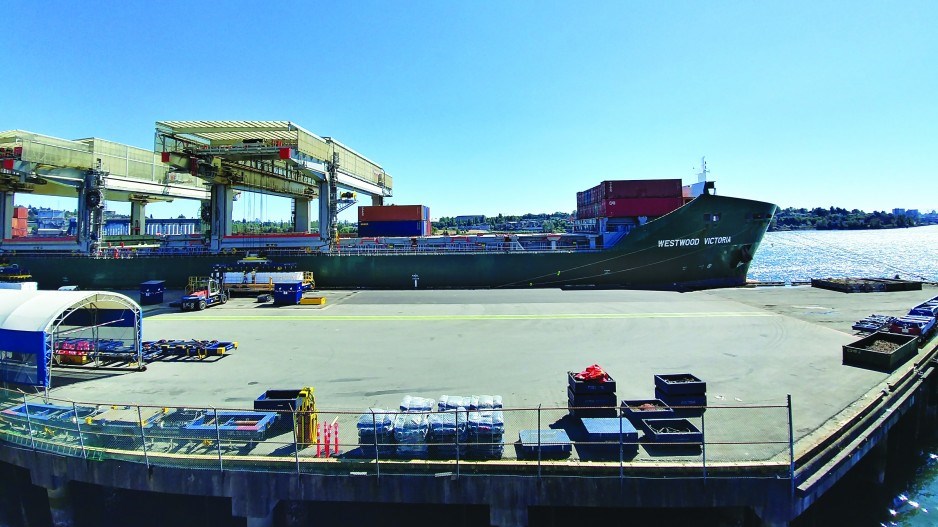Shippers’ frustration is growing over lengthy delays in Canada Border Services Agency (CBSA) inspections of cargo containers moving through Canadian ports, especially in Vancouver.
Results of a Canadian International Freight Forwarders Association (CIFFA) container examination cost survey discussed at the organization’s 2017 annual general meeting point to delays of up to four weeks in the Port of Vancouver compared with three to five days in the Port of Montreal.
Frustration over those delays was voiced in a CIFFA blog posted last August. “Welcome to Canada. The CBSA has become the best marketing tool for the Port of Seattle,” it quoted a CIFFA Vancouver member as saying, before reporting that, “incredible as it may seem, delays from vessel discharge to containers being called for examination are as long as six weeks and more at Canada’s busiest port.”
The costs of container examination delays for CIFFA members and Canadian consumers are significant.
CIFFA estimates that invoices for examination, demurrage (fees for delays in loading and unloading ships) and storage can range up to $4,000 per container. Those fees, it says, add millions of dollars to supply chain and individual trader costs, some of which inevitably find their way to consumers.
CIFFA claims there is no incentive to improve inspection efficiency because container terminal operators charge daily per-container storage fees of $150 or more, and shipping lines bill shippers and freight forwarders for demurrage.
Julia Kuzeljevich, CIFFA’s public affairs manager, told Business in Vancouver that there is a legitimate security rationale for the CBSA inspections.
“However, the system needs transparency and efficiency,” Kuzeljevich said. “The delays in processing containers are leading to tremendous costs for our members.”
She added that her organization began raising the issue of cargo movement delays in 2009 when the CBSA initiated a program of drilling holes in containers to test for fumigants from foreign lands. That issue, which she said caused “inordinate delays,” has been largely resolved, but Kuzeljevich said container inspections and costs remain a major headache for shippers.
“We urge the CBSA to address both the pricing model and the regulatory framework surrounding container examinations across the country.”
The CBSA maintains, however, that numerous factors complicate its inspection efficiency.
For example, the agency has to wait for terminal and warehouse operators to present containers to CBSA when they’re called for examination for security or other reasons, said CBSA communications officer Kristine Wu in an emailed response to BIV.
She added that the agency is working with the Port of Vancouver (PoV), terminal operators and other industry stakeholders to improve system efficiency.
That initiative includes the construction of a new federal government container examination centre on Tsawwassen First Nation land adjacent to PoV’s Deltaport and the new Delta iPort container logistics centre.
CBSA’s eManifest system, which has been operating since 2011, requires container ships and freight forwarders to send advance commercial information about their shipments to CBSA electronically. The CBSA claims that the collection of pre-arrival data improves its ability to detect “high-risk shipments before they arrive at the border” and accelerates low-risk cargo processing.
But a stalled container inspection process is only one of many marketplace issues facing PoV and other major players in the global shipping industry in 2017.
Bob Ballantyne, president of the Freight Management Association of Canada (FMA), pointed to the arrival of larger container ships that will increase pressure on the weaker links in the cargo movement chain in ports and complicate issues like CBSA container inspections.
He added that the FMA has ongoing concerns with the movement of grain and other commodities via the country’s railway duopoly.
“Our big retail members that move containers by rail tend to be reasonably satisfied with their service,” Ballantyne said. “It’s interesting because there is real competition for the railways in that business and – surprise, surprise – they act like businesses in a competitive industry. But when they’re dealing with grain and mining products, forest products … the service and chronic complaints tend to be in those industries, and sometimes it’s consistency of movement; other times it’s car supply.”
The FMA includes about 100 members ranging from major retailers such as Canadian Tire (TSX:CTC) and Hudson’s Bay Co. (TSX:HBC) to grain, forestry and mining companies.
As with other major North American ports, PoV will also be affected by the market fallout from major disruptive forces in the global shipping sector.
Danish Ship Finance (DSF) provided an inventory of them in a biannual shipping industry analysis released earlier this year. The Copenhagen-based ship financing company’s Shipping Market Review noted, for example, that emerging economies face increasingly difficult conditions because “[global consumers] are no longer demanding the same goods and raw materials as they did in the past.”
That’s especially disquieting for cargo carriers because, as the report points out, the ability of those emerging economies “to create jobs for their growing populations is the single most important prerequisite for future growth in seaborne trade volumes.”
It also noted that the mobile and digital technology disrupting other industries is now at the gates of the global shipping industry, which is notoriously slow to embrace change.
In DSF’s December 2016 review, the company noted that the world’s shipping fleet is “ill-suited” for the coming shift in trade and unprepared for supply chain digitization and other elements of a fast-rising tide of technological change.
DSF said sector disruption, which could “redefine the ecosystem of container trading,” could also generate much added value for major shipping lines. It warned, however, that companies that are slow to adopt new technology “could be marginalized.”
“The general outlook for the shipping industry is therefore bleak. Freight rates and secondhand prices are low across the board, and shipyards are closing, or reducing capacity, due to overcapacity…. The industry is simply positioned for growth in seaborne trade volumes and is very vulnerable to forces that may reduce growth in trade volumes.”
@timothyrenshaw




